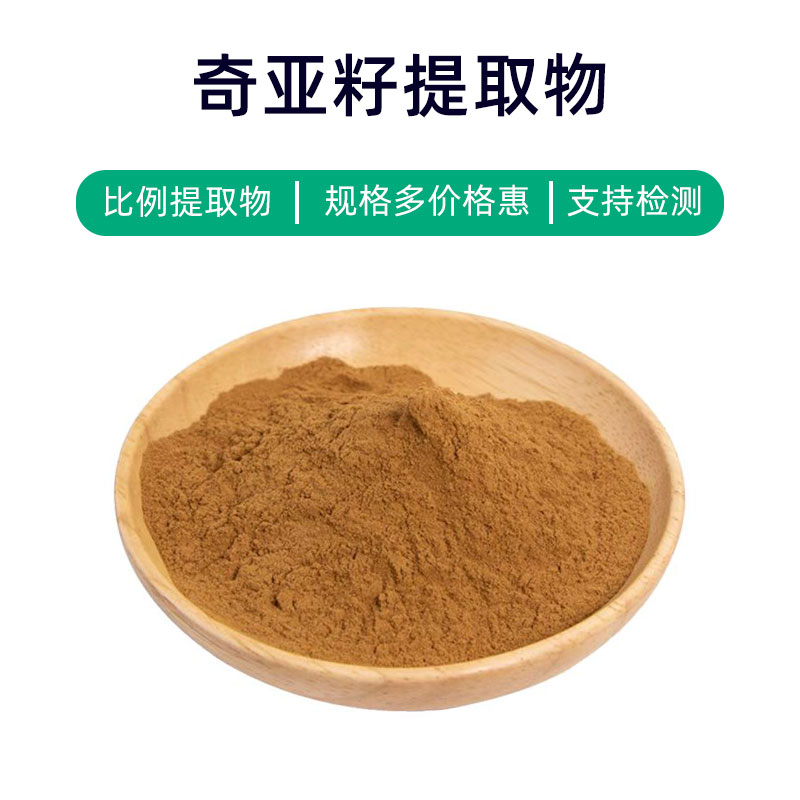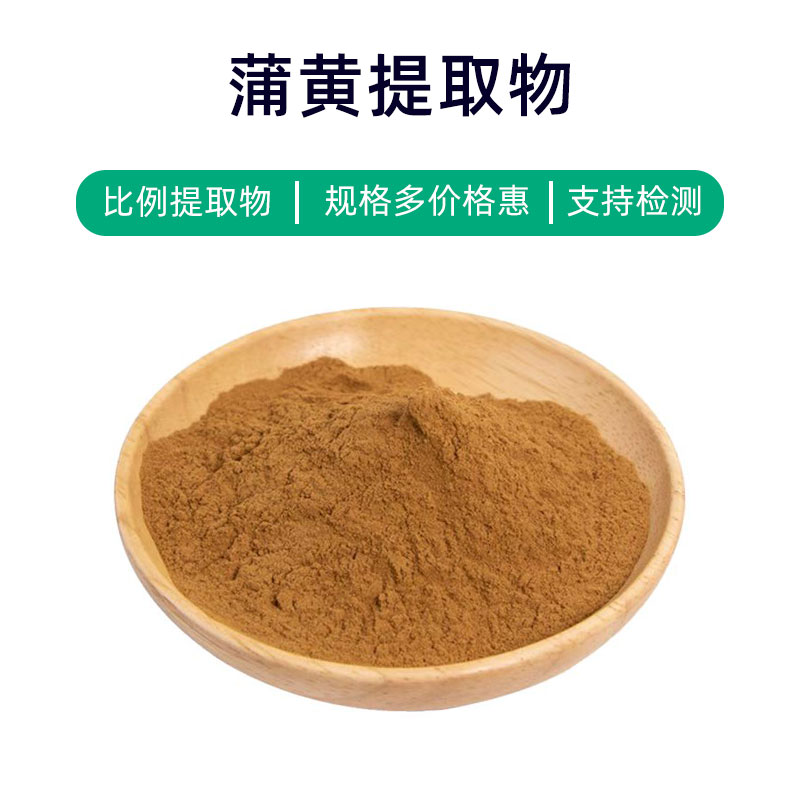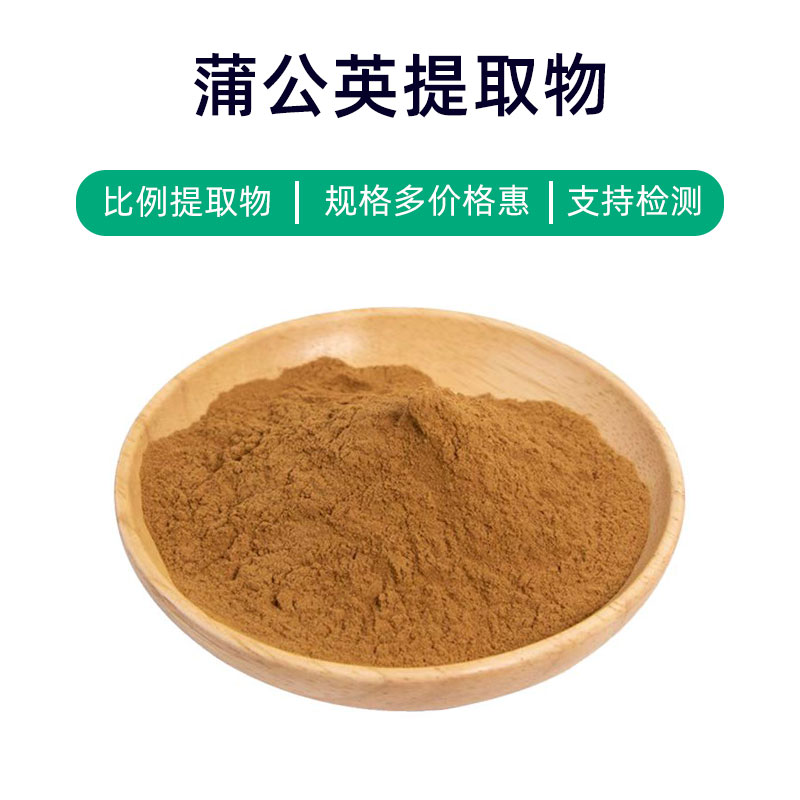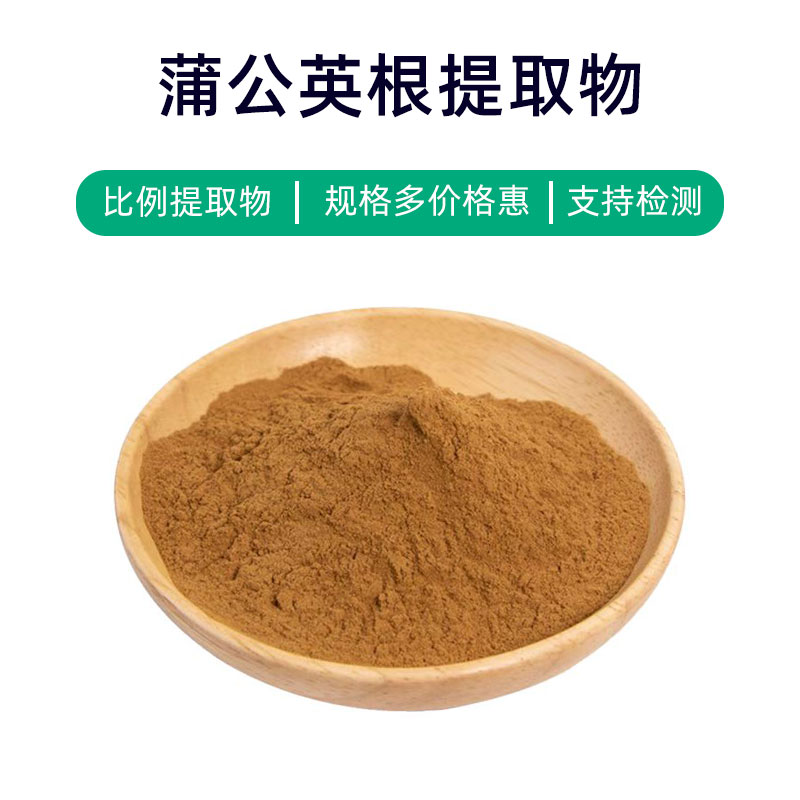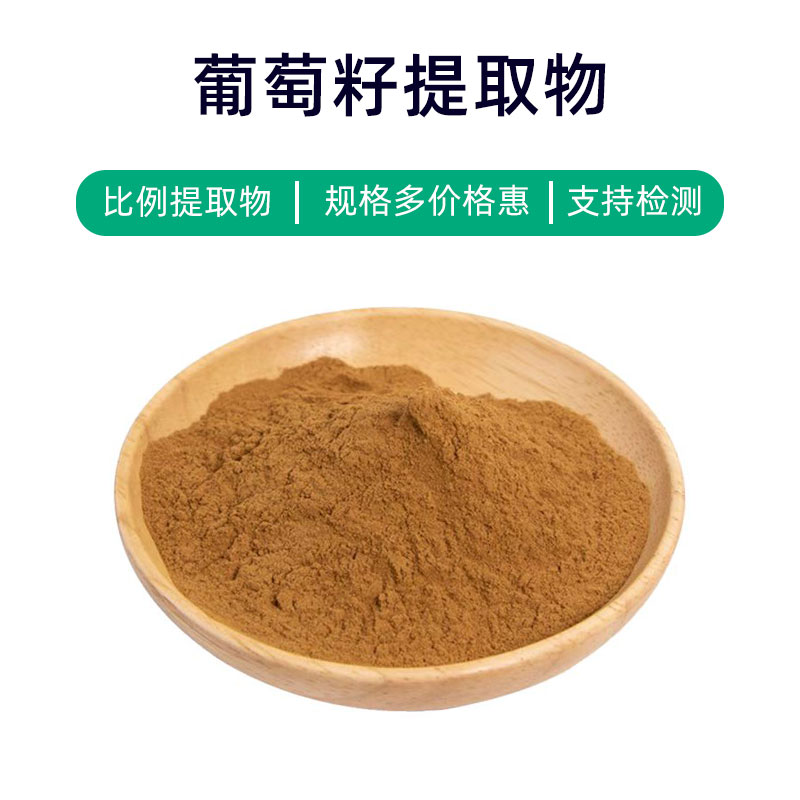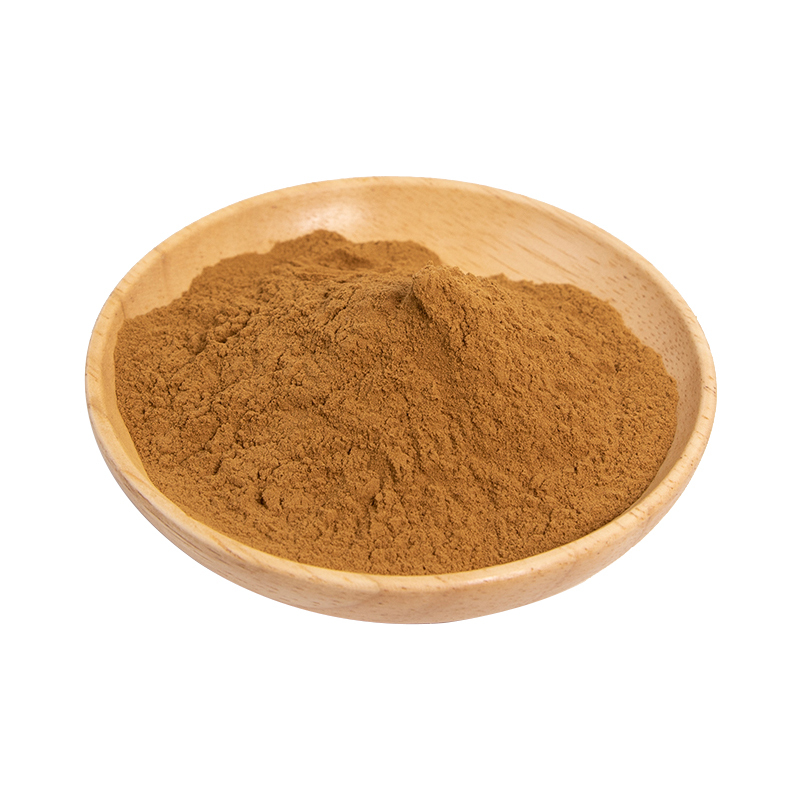Product Introduction to Patchouli Extract
Patchouli extract is a natural plant extract derived from the patchouli plant, containing various terpenoids such as patchoulol and pogostone, as well as alcohols and phenols. This extract has a unique aromatic scent and typically appears as a deep brown to brown powder.
In the pharmaceutical field, patchouli extract is utilized in traditional Chinese medicine, exhibiting anti-inflammatory, antibacterial, and insect-repelling properties, commonly used for treating skin inflammation and gastrointestinal discomfort. Additionally, its fragrance can help soothe emotions and alleviate anxiety and stress.
In cosmetics, patchouli extract is often added to perfumes, fragrances, and skincare products, imparting a unique aroma and helping to regulate oil secretion and tighten pores, thus improving skin texture.
Moreover, patchouli extract is widely used in the fragrance industry, frequently included in perfumes, soaps, and shampoos to provide lasting fragrance and unique flavor.
Production Process of Patchouli Extract
The production process of patchouli extract generally includes the following steps:
- Raw Material Collection and Processing: First, select high-quality patchouli plants, typically using fresh or dried leaves. After collection, the raw materials are cleaned and processed to remove impurities, then dried to an appropriate moisture content.
- Extraction Process: The processed patchouli leaves are placed in extraction equipment, with methods such as water extraction, ethanol extraction, or supercritical fluid extraction used. Water extraction is one of the common methods, which utilizes water to extract active components from patchouli.
- Concentration and Separation: After extraction, the solution is concentrated using evaporation or vacuum methods to remove moisture from the extract, resulting in a concentrated liquid. Next, the concentrated liquid is separated to eliminate solid impurities and solvent residues.
- Refinement and Purification: Further refinement and purification of the concentrated liquid are performed, commonly using gel filtration, gel chromatography, or crystallization to obtain a high-purity extract.
- Drying and Grinding: The purified extract undergoes drying, often utilizing spray drying or vacuum drying methods to convert the extract from liquid to solid state. The dried extract is then crushed to obtain a powdered form of patchouli extract.
- Packaging and Storage: Finally, the extract is packaged, usually in sealed containers to prevent moisture or contamination. During storage, it should be kept in a cool, dry place, shielded from direct sunlight and high temperatures to maintain its stability and the integrity of active components.
Efficacy and Side Effects of Patchouli Extract
Patchouli extract is a common natural plant extract with multiple benefits:
- Anti-inflammatory Properties: Rich in volatile oils and flavonoids, patchouli extract has significant anti-inflammatory effects, effectively alleviating inflammatory responses and reducing tissue swelling and pain.
- Antibacterial and Antiviral Effects: Studies indicate that patchouli extract possesses antibacterial and antiviral activities, inhibiting the growth of bacteria and viruses, and providing preventive and adjunctive treatment for respiratory infections.
- Sedative and Calming Effects: Patchouli extract contains rich volatile oils, with one of the primary components, patchoulol, having sedative and calming effects, useful for easing symptoms of anxiety and insomnia.
- Digestive Regulation: Patchouli extract can promote gastrointestinal motility, enhancing digestive function, thus alleviating symptoms of indigestion and bloating.
- Antioxidant Effects: Flavonoids and polyphenolic compounds in patchouli extract exhibit strong antioxidant properties, which can scavenge free radicals, delay cellular aging, and protect the body from oxidative damage.
- Anti-allergic Properties: Some studies show that the active components in patchouli extract can inhibit allergic reactions, relieving symptoms of allergic conditions such as allergic rhinitis and atopic dermatitis.
Despite the many benefits of patchouli extract, potential side effects should be noted:
- Allergic Reactions: Some individuals may experience allergic reactions to components in patchouli extract, such as skin itching and rashes, requiring immediate discontinuation.
- Gastrointestinal Discomfort: Long-term or high-dose use of patchouli extract may cause gastrointestinal discomfort, including nausea, vomiting, and diarrhea, necessitating cautious use.
- Interactions: Patchouli extract may interact with other medications, affecting efficacy, so it is advisable to follow medical advice when using it with other drugs.
In summary, while patchouli extract has numerous benefits, attention to dosage and usage is essential to avoid potential side effects. Should discomfort or questions arise, consulting medical personnel promptly is advisable.
Application Scenarios and Dosage of Patchouli Extract
Patchouli extract has broad applications in pharmaceuticals, food, and cosmetics. Here is an overview of its primary applications and dosages:
- Applications in Medicine:
- Treatment of Digestive System Diseases: Patchouli extract is commonly used for digestive ailments like gastritis and gastric ulcers. A typical oral dosage is 5-10 grams three times daily, or adjusted according to a doctor's recommendation.
- Treatment of Respiratory System Diseases: For inflammatory conditions caused by respiratory infections, such as bronchitis and colds, patchouli extract formulations can be used. Common forms include oral liquids and granules, with a standard dosage of 5-10 milliliters three times daily.
- Adjunctive Treatment of Neurological Disorders: Due to its calming effects, patchouli extract can help relieve symptoms of anxiety and insomnia. Common forms include oral liquids and tablets, with dosages adjustable based on condition and medical advice.
- Applications in Food:
- Food Additive: Patchouli extract can be used as a food additive, imparting special aroma and flavor. The common dosage is 0.1-0.5 grams of patchouli extract per kilogram of food.
- Applications in Cosmetics:
- Perfumes and Skincare Products: Patchouli extract's unique aroma is frequently used in perfumes and skincare products, providing an enjoyable scent. Dosages are generally adjusted based on the product formulation.
- Precautions:
- Before using patchouli extract formulations, conduct a skin sensitivity test to avoid allergic reactions.
- In medicinal applications, strictly follow the advice of healthcare professionals to avoid excessive or prolonged usage.
- When used in food and cosmetics, adhere to relevant additive usage standards for safety.
In conclusion, patchouli extract holds significant application value across pharmaceuticals, food, and cosmetics, with careful attention to dosage, frequency, and appropriate population to ensure safe and effective use.
Introduction to the Source Plant, Distribution, and Growth Environment of Patchouli Extract
Patchouli (scientific name: Pogostemon cablin) is a perennial herb belonging to the Lamiaceae family, with its extract commonly used in pharmaceuticals and the fragrance industry. Below is a detailed description of the source plant for patchouli extract, its distribution, and growth environment:
- Plant Introduction:
- Patchouli is a fragrant herb that typically grows to a height of about 60-90 cm. Its stems are upright and branched, with leaves arranged oppositely, featuring oval or obovate shapes with serrated edges. During its growth, patchouli produces small purple or pale purple flowers, usually blooming from summer to autumn.
- Distribution:
- Patchouli is native to Southeast Asia and primarily found in countries and regions such as India, Sri Lanka, southern China, Thailand, Vietnam, and Indonesia. In China, patchouli is mainly distributed in mountainous and hilly areas of provinces such as Yunnan, Guangxi, and Fujian.
- Growth Environment:
- Patchouli thrives in warm, humid climates, preferring sandy or loamy soils and showing strong adaptability to sunny and well-ventilated environments. Its optimal growth temperature is between 20-30 degrees Celsius, with suitable humidity of 60%-80%. Patchouli is not frost-tolerant and is sensitive to low temperatures and drought, requiring protective measures in cold seasons.
- Cultivation Techniques:
- Patchouli is typically propagated through seeding or division, with seeding usually taking place in spring or autumn. Seeds are sown on the surface of fertile soil, with moisture maintained to facilitate germination. Patchouli can also be propagated through grafting to enhance growth speed and aroma quality.
Overall, patchouli is a plant of significant medicinal and aromatic value, widely distributed in Southeast Asia, preferring warm, humid growth environments, and it does not have strict soil requirements. Maintaining suitable temperature and humidity conditions during its growth is essential for ensuring healthy growth and enhancing aroma quality.
Processing and Storage of Patchouli Extract
The processing of patchouli extract typically involves the following steps: First, harvested patchouli plants are cleaned and initially processed to remove impurities; then, the cleaned plant material is ground or crushed to increase extraction efficiency; next, suitable extraction methods such as steam distillation or solvent extraction are employed to extract the active components from the plants; finally, the extracted material undergoes filtration, concentration, and drying to yield the final patchouli extract.
For storage, patchouli extract should be kept in a dry, cool, and ventilated environment, away from direct sunlight and high temperatures. To prevent oxidation and moisture ingress, it is best to store the extract in sealed containers and avoid prolonged exposure to air. Additionally, regularly check the appearance and aroma of the extract to ensure its quality is not compromised.
Monica Sun is a seasoned expert in the plant extraction industry with over a decade of experience in research and production. She specializes in the extraction and purification of plant active ingredients, focusing on driving innovation in natural product applications. Monica has participated in the development of multiple functional plant extracts, delivering high-value natural raw material solutions for the health food, pharmaceutical, and dietary supplement sectors.









